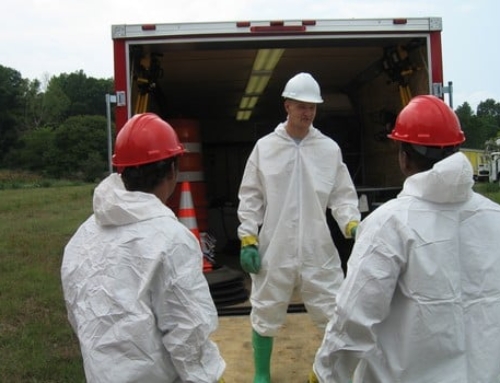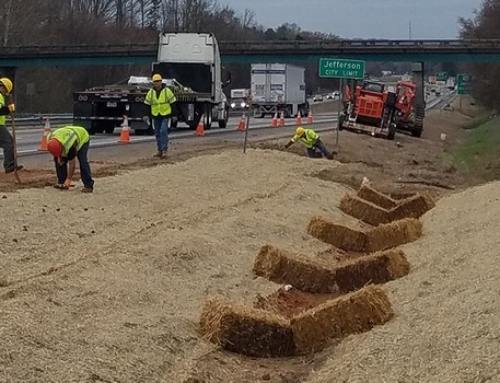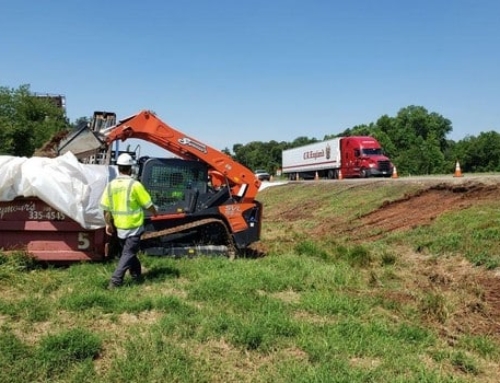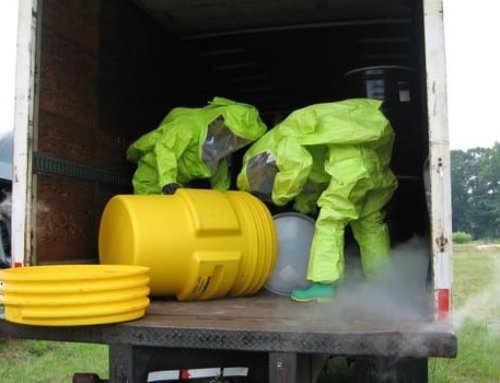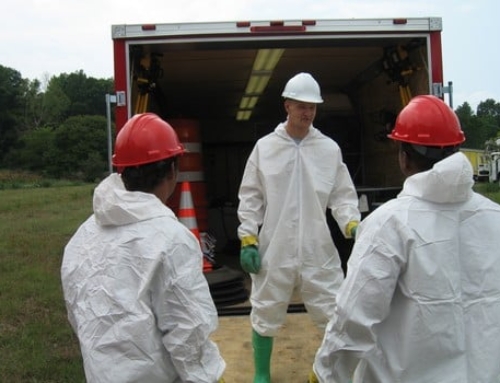#1 Hazardous Spill Cleanup in Gainesville Georgia!
Are you searching for someone to handle Hazardous Spill Cleanup in Gainesville Georgia? Look no further than Seymour’s Spill Response! In addition to Hazardous Spill Cleanup we also provide a wide array of other environmental services. Just reach out to us at 706-335-4545!
Seymour’s Spill Response is always available to help you, and we’re pleased to assist customers in Gainesville Georgia and surrounding areas.
Don’t Wait, Call on Seymour’s Spill Response!
If you’re in search of Hazardous Spill Cleanup in Gainesville Georgia, look no further than Seymour’s Spill Response!
When you’re in need of Hazardous Spill Cleanup, you want to choose the most skilled company for the job. That’s why you should get in touch with Seymour’s Spill Response at 706-335-4545 if you find yourself looking for Hazardous Spill Cleanup in Gainesville or surrounding areas.
If you’re in need of immediate assistance, please call us at 706-335-4545 or request service online!

Why You Should Choose Us for Hazardous Spill Cleanup in Gainesville Georgia
Seymour’s Spill Response prides itself on getting the job done. No matter how big or small the task, each situation is approached with the utmost integrity.
At Seymour’s Spill Response, our team responds to every job with urgency. We maintain numerous HAZMAT certifications, including Hazwoper, NIMS, and Erosion and Sediment Control. You’ll be taken care of like family when you call on us to help! Anytime of the day or night, our team is standing by to help you when you need us the most! We strive to provide the best service to each and every customer, and hope to become your go-to company when you’re in need of Hazardous Spill Cleanup in or around Gainesville, Georgia. Click here to check out some of our customer reviews!
Serving Gainesville, Georgia and surrounding areas!
Each member of the Seymour’s Spill Response team looks forward to providing exemplary service to our neighbors in Gainesville, Georgia!
The city of Gainesville is the chair of processing of Hall County, Georgia, United States. As of the 2020 census, the city had a population of 42,296. Because of its large number of poultry government plants, it has been called the “Poultry Capital of the World.” Gainesville is the principal city of the Gainesville, Georgia Metropolitan Statistical Area, which is included in the Atlanta–Sandy Springs–Gainesville, Georgia Combined Statistical Area.
Gainesville was standard as “Mule Camp Springs” by European-American settlers in the to the fore 1800s. Less than three years after the meting out of Hall County on December 15, 1818, Mule Camp Springs was renamed “Gainesville” on April 21, 1821. It was named in tribute of General Edmund P. Gaines, a hero of the War of 1812 and a noted military surveyor and road-builder. Gainesville was chosen to be the county chair and chartered by the Georgia General Assembly on November 30, 1821.
A gold rush that began in affable Lumpkin County in the 1830s resulted in an growth in the number of settlers and the initiation of a concern community. In the center of the 19th century, Gainesville had two important events. In 1849, it became traditional as a resort center, with people attracted to the springs. In 1851, much of the little city was destroyed by fire.
After the Civil War, Gainesville began to amass from 1870. In 1871 The Atlanta and Richmond Air-Line Railway, later re-organized into The Atlanta and Charlotte Air Line Railroad, began to stop in Gainesville, increasing its ties to supplementary markets and stimulating issue and population. It grew from 1,000 in 1870, to on height of 5,000 by 1900.
By 1898, textile mills had become the primary driver of the economy, with the railroad integral to delivering raw cotton and carrying away the mills’ products. With the revenues generated by the mills, in 1902, Gainesville became the first city south of Baltimore to install street lamps. On March 1, 1905, free mail delivery began in Gainesville, and on August 10, 1910, the Gainesville make known office was opened. On December 22, 1915, the city’s first high-rise, the Jackson Building, had its formal opening. In 1919 Southern Bell made improvements to the phone system.
City services began in Gainesville upon February 22, 1873, with the election of a City Marshal, followed by sound waste increase in 1874. In 1890, a sticking together issue to fund the waterworks was passed, and the native water distribution system was developed.
In 1943, at the culmination of World War II, Gainesville contributed to the battle effort by leasing the airport to the US paperwork for $1.00. The military used it as a naval expose station for training purposes. In 1947, the airdrome was returned to the city of Gainesville, improved by the adjunct of two 4,000-foot (1,200 m) landing strips (one of which was forward-looking lengthened to 5,500 feet (1,700 m)).
After World War II, a businessman named Jesse Jewell started the poultry industry in north Georgia. Chickens have previously become the state’s largest agricultural crop. This $1 billion a year industry has unquestionable Gainesville the title “Poultry Capital of the World”.
In 1956, the U.S. Army Corps of Engineers build up Lake Sidney Lanier, by building Buford Dam upon the Chattahoochee River. During the 1996 Summer Olympics, Gainesville served as the venue for the rowing and kayaking medal competitions, which were staged upon Lake Lanier.
Gainesville gained accreditation of its Parks and Recreation Department in 2001. This was the third department in the let pass to be accredited. The Lakeside water treatment tree-plant opened in 2002. The city has sponsored other social activities, including the Spring Chicken Festival in 2003, the Art in the Square hoard in 2004, and “Dredgefest” in 2008.
2008 motto the reopening of the Fair Street Neighborhood Center, the reopening of the Linwood Water Reclamation Facility Grand, and the ability of the Longwood Park Fishing Pier.
On January 28, 2021, a poultry reforest in Gainesville leaked liquid nitrogen killing 6 and hospitalizing 12.
Gainesville is located in central Hall County at 34°18′16″N 83°50′2″W / 34.30444°N 83.83389°W (34.304490, -83.833897). It is bordered to the southwest by the city of Oakwood. Interstate 985/U.S. Route 23 passes through the southern portion of the city, leading southwest 54 miles (87 km) to Atlanta and northeast 23 miles (37 km) to Baldwin and Cornelia. U.S. Route 129 runs through the east side of the city, leading north 24 miles (39 km) to Cleveland and southeast 21 miles (34 km) to Jefferson.
According to the United States Census Bureau, the city has a total Place of 33.9 square miles (87.7 km), of which 31.9 square miles (82.7 km2) are house and 1.9 square miles (5.0 km), or 5.75%, are water.
Nestled in the foothills of the Blue Ridge Mountains, parts of Gainesville lie along the shore of one of the nation’s most popular inland water destinations, Lake Lanier. Named after Confederate veteran, Georgia author and musician Sidney Lanier, the lake was created in 1956 next the U.S. Army Corps of Engineers dammed the Chattahoochee River near Buford and flooded the river’s valley. Although created primarily for hydroelectricity and flood control, it along with serves as a reservoir providing water to the city of Atlanta and is a extremely popular recreational sympathy for everything of north Georgia.
Much of Gainesville is heavily wooded, with both deciduous and coniferous trees.
Much in the same way as the settle of northern Georgia, Gainesville has a humid subtropical climate (Köppen climate classification Cfa), with cool to mild winters and hot, humid summers.
While Gainesville does not sit in Tornado Alley, a region of the United States where brusque weather is common, Supercell thunderstorms can sweep through any epoch between March and November, being primarily concentrated in the spring. Tornado watches are frequent in the spring and summer, with a reprimand appearing at least biannually, occasionally with higher than one per year.
Tornado upheaval in the Gainesville area is above Georgia give access average and is 108% greater than the overall U.S. average. Gainesville was the site of a deadly F4 on June 1, 1903, which killed 98 people. Gainesville was the site of the fifth deadliest tornado in U.S. history in 1936, in which Gainesville was devastated and 203 people were killed. In April 1974, an F4 tornado 22.6 miles away from the Gainesville city center killed six people and slighted thirty. In December 1973, an F3 tornado 2.1 miles away from the city middle injured twenty-one people. Both storms caused between $500,000 and $5,000,000 in property damages.
The poultry cultivation industry in Gainesville began to produce after World War II, when Jesse Jewell, a Gainesville feed salesman, began his business. The format he developed was to sell North Georgia farmers baby chicks and feed upon credit. When the chicks were grown, Jewell would buy back the adult chickens (broilers) at a price that would cover his costs and guarantee farmers a profit. Once Jewell signed on enough farmers to manufacture broilers for him, he invested in his own dealing out plant and hatchery.
As of 2013, poultry farming remains a significant economic driver in Gainesville, representing six of its top ten employers (7,600 employees), nearly one-quarter of the sum population in the city in 2010 (and a forward-thinking proportion of the working-age population). It is the most well-known business in the area, with statewide revenue exceeding $3 billion. These jobs have attracted numerous Hispanic workers, adding to the diversity of families in the city and county. The proportion of Hispanic and Latino residents is greater than 40 percent of the city’s population, where the jobs are.
According to Gainesville’s 2012 Comprehensive Annual Financial Report, the top employers in the city are:
Gainesville is the house of the Gainesville Theater Alliance (GTA), which is a partnership in the company of Brenau University, the University of North Georgia, Theatre Wings, and the Professional Company. This coalition provides theatrical entertainment for every one Gainesville area. GTA utilizes both professional and student actors in its productions and their performances have been nationally acclaimed.
The Northeast Georgia History Center is a museum expected by Brenau University in Downtown Gainesville that focuses on the stock of the Northeast Georgia region. Some notable exhibits enlarge the Land of Promise and Northeast Georgia Sports Hall of Fame.
The Arts Council is a non-profit organization focused on providing Gainesville residents taking into account a broad variety of visual, performing, and teacher arts. The Atlanta Symphony Orchestra has been known to perform at this location. The Arts Council is located in the Smithgall Arts Center, which is a former two-story train depot that the Arts Council purchased from CSX Transportation in 1992.
The Quinlan Visual Arts Center is a non-profit arts connection initially founded as the Gainesville Arts Association in 1942. The Quinlan Visual Arts Center acts as an exhibit, with combination galleries upon display throughout the year, as well as an matter center. It is next an affiliate of the Arts Council and provides art classes for both children and adults.
The Gainesville Symphony Orchestra (GSO) was a volunteer orchestra founded in 1982 as the Lanier Symphony Orchestra. However, due to a dearth in funding during the Great Recession, the GSO shut by the side of in 2013 after going on for 30 years of operation.
Gainesville is also home to the Gainesville Ballet Company which is a partnership taking into account Brenau University and the Gainesville School of Dance. One of their more popular performances throughout the year is Tchaikovsky’s The Nutcracker.
Alta Vista Cemetery is a graveyard located just outdoor Downtown Gainesville. The well-known Confederate general James Longstreet is buried here. Other notable gravesites include: several Georgia governors, an astronaut, a rocket scientist, a circus performer, and that of poultry buccaneer Jesse Jewell (whom Jesse Jewell Parkway, Gainesville’s main thoroughfare, is named after).
As of the 2020 United States census, there were 42,296 people, 13,314 households, and 8,796 families residing in the city.
As of the census of 2010, there were 33,804 people, 11,273 households, and 7,165 families residing in the city. The population density was 1.161.6 people per square mile (450.7/km2). There were 12,967 housing units at an average density of 445.6 per square mile (172.0/km). The racial makeup of the city was 54.2% White, 15.2% African American, 0.6% Native American, 3.2% Asian, 0.2% Pacific Islander, 23.4% from supplementary races, and 3.2% from two or more races. Hispanic or Latino residents of any race were 41.6% of the population.
There were 11,273 households, out of which 30.3% had kids under the age of 18 living considering them, 39.3% were married couples energetic together, 18.2% had a female householder later no husband present, and 36.4% were non-families. 28.9% of whatever households were made going on of individuals, and 3.64% had someone successful alone who was 65 years of age or older. The average household size was 2.85 and the average relatives size was 3.55.
Age distribution was 33.9% under the age of 20, 9.5% from 20 to 24, 29.2% from 25 to 44, 16.7% from 45 to 64, and 10.5% who were 65 years of age or older. The median age was 29.5 years. For every 100 females, there were 91.6 males. For all 100 females age 20 and over, there were 84.4 males.
The median pension for a household in the city was $38,119, and the median pension for a relatives was $43,734. Males had a median pension of $26,377 versus $20,531 for females. The per capita allowance for the city was $19,439. About 24.9% of families and 29.1% of the population were below the poverty line, including 40.7% of those below age 18 and 17.6% of those age 65 or over. In May 2013, the unemployment rate was 6.9%, less than the overall rate in Georgia of 8.3%, the US of 7.6%
Of the population aged 15 years and over, 31.0% have never been married; 50.0% are now married; 2.4% are separated; 7.7% are widowed; and 9.9% are divorced.
Gainesville is home to the Northeast Georgia Medical Center Gainesville, which houses a Level I Trauma Center and the Georgia Heart Center.
Arrendale State Prison of the Georgia Department of Corrections is a women’s prison located in unincorporated Habersham County, near Alto, and in the Gainesville area.
Three African Americans, Beulah Rucker, E. E. Butler, and Ulysses Byas were scholarly pioneers in Gainesville and Hall County. Rucker founded Timber Ridge Elementary School, the first literary for Black children in Gainesville, in 1911. In 1951 she established a night tall school for African-American veterans, which was the on your own High School for veterans in Georgia. E. E. Butler served as an educator for just one year past earning his Physician’s license. In 1954, he became one of two who became the first Black men on the Gainesville City Schools Board of Education, a very uncommon situation in the United States. When the schools were integrated in 1969, Byas, like most Black college principals was offered a demotion. Rather than take a job as an partner in crime principal at Gainesville High School, he moved to Tuskegee, Alabama, where he became the nation’s first Black learned superintendent.
E. E. Butler High School was a segregated educational created in 1962 in appreciation to court demands for equalization of resources for Black students. After the integration of public schools, it was closed in 1969.
The Gainesville City School District holds pre-school to grade twelve, and consists of five elementary schools, a center school, and a high school. The district has 282 full-time teachers and over 4,438 students. Its lone tall school, Gainesville High School boasts several notable alumni, including Deshaun Watson, Texans quarterback, Cris Carpenter, former professional baseball player (St. Louis Cardinals, Florida Marlins, Texas Rangers, Milwaukee Brewers), Tasha Humphrey, professional basketball player, and Micah Owings, current professional baseball player (Arizona Diamondbacks, Cincinnati Reds, San Diego Padres). The mascot for Gainesville High School is the Red Elephant.
The Hall County School District holds pre-school to grade twelve, and consists of twenty-one elementary schools, six center schools, and seven high schools. The district has 1,337 full-time teachers and higher than 21,730 students. The high schools in this district have produced a number of notable alumni including, Connor Shaw, starting quarterback for the University of South Carolina Gamecocks football team; Casey Cagle, Lt. Governor, State of Georgia; James Mills, Georgia State Representative; A.J. Styles, professional wrestler; Deshaun Watson, starting quarterback for the Houston Texans, Mike “MoonPie” Wilson, former NFL football player; Chester Willis, former NFL football player; Jody Davis, former catcher for Chicago Cubs and Atlanta Braves baseball teams; Billy Greer, bass guitarist for progressive rock band Kansas; Corey Hulsey, former NFL Oakland Raiders football player; Robin Spriggs, author and actor; and Martrez Milner, American football tight end.
Gainesville has three private schools: Riverside Military Academy which is a private, college preparatory, boarding and day learned for boys in grades 7 through 12; Lakeview Academy, a private, nondenominational, college preparatory school; and Brenau Academy, a female, college preparatory, residential instructor for grades 9–12, which is a part of the Brenau University system.
Gainesville has several institutions of well ahead education: University of North Georgia (formerly Gainesville State College), which was established January 8, 2013, as a consequences of the consolidation of North Georgia College and State University and Gainesville State College; Brenau University, a private, not-for-profit, undergraduate- and graduate-level highly developed education institution; the Interactive College of Technology; and Lanier Technical College.
Established in 2005, the Public Defender’s Office at Gainesville provides representation for persons accused of felony offenses in Hall County. Attorneys from the office have been endorsed for their community involvement, as competently as for their acumen in the courtroom.[citation needed] In 2008, a first-year attorney successfully challenged the Sex Offender Registration Law in the Georgia Supreme Court.
If you’re in Gainesville and are looking for Hazardous Spill Cleanup, give us a call!
The team at Seymour’s Spill Response handles every job with the utmost care. You will always be in the best hands when you call on us for assistance. We take pride in being the #1 choice for environmental services in Jackson County and surrounding areas! Morning, afternoon, or night, we’re standing by to provide help whenever you call! We strive to provide excellent service to each and every customer, and hope to become your go-to company when you’re in need of Hazardous Spill Cleanup in or around Gainesville, Georgia.


